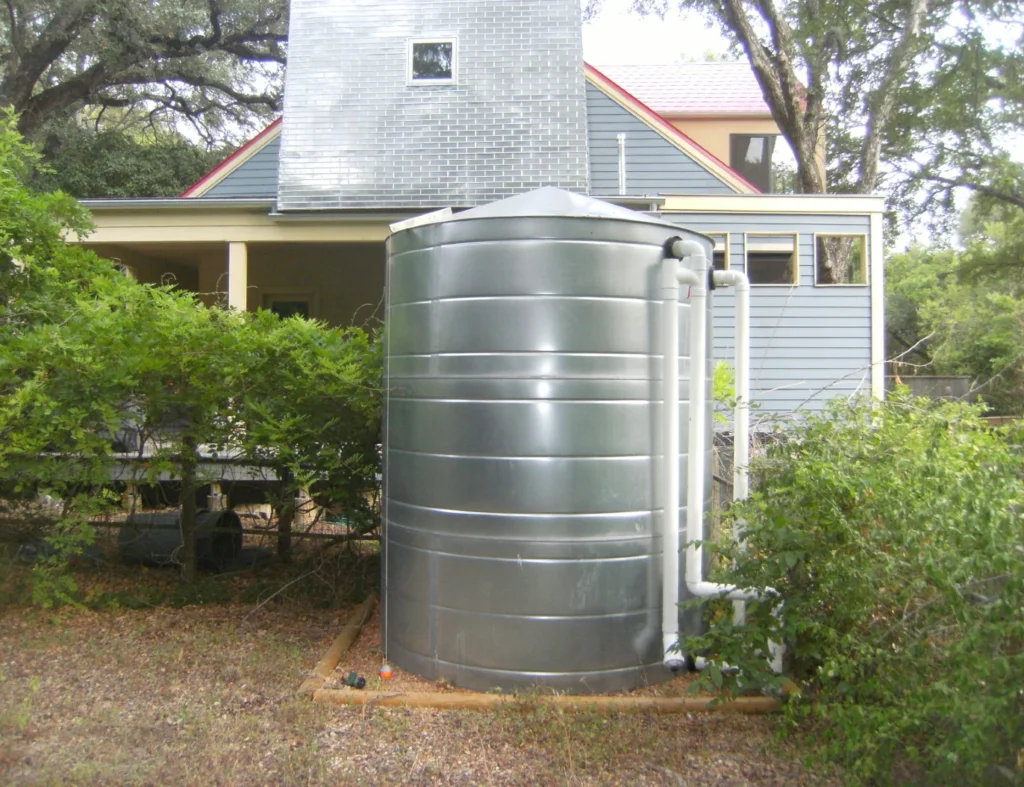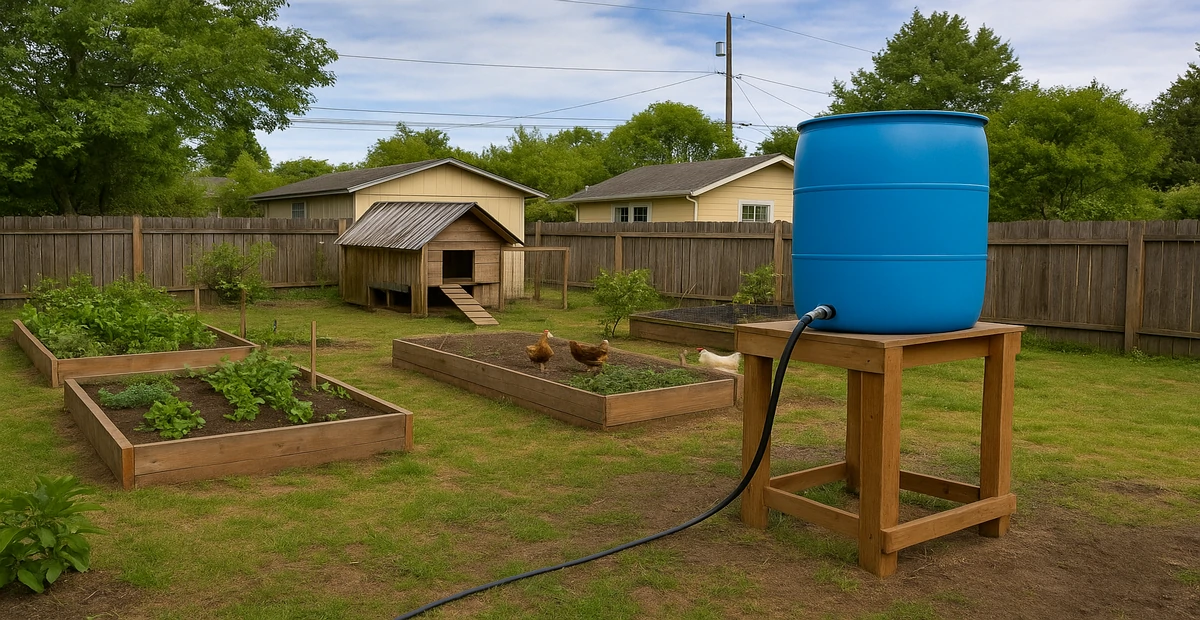I’ll be honest first time I tried making a gravity fed water system, it leaked more than my old barn roof in spring. I thought, “How hard can it be? Just put a barrel up high, run a pipe down, water comes out.” Yeah… turns out water has a mind of its own.
I’ve been living this backyard urban homesteading life for over 10 years. I’ve raised chickens in the city, canned more jars than I can count (and broke a few), built compost piles, and tried almost every DIY setup you can imagine. A good water system is one of those things you don’t think about until it stops working. And trust me, hauling buckets up a muddy slope at 6 a.m. makes you appreciate gravity.
Why I Even Bothered With a Gravity Fed Water System
One summer my well pump fried during a heat wave. No water for two days. Chickens were panting, garden was drooping like wet socks. That’s when I decided never again am I gonna rely 100% on electricity for water.

The beauty of a gravity system is it’s simple:
- Water source up high (tank, barrel, pond).
- Hose or pipe going down.
- Gravity does the rest.
No pump, no power bill, no noise. Just good old Earth pulling water down like it’s done since forever.
My First Attempt (a Comedy of Leaks)
So I had this bright idea I stuck a 55 gallon drum on top of my old chicken coop, hooked up a garden hose, and filled it with rainwater. Looked perfect… for about 10 minutes.
First problem: the barrel wasn’t on level ground, so it leaned forward. The hose kinked, and then the whole thing tipped, dumping 40 gallons of water on my poor ducks.
Lesson? Always make sure your base is solid and level. And don’t put 400 pounds of water on a rickety roof unless you like surprises.
How I Actually Made It Work (Version 2.0)
Here’s what I did right the second time:
- Found a good spot about 6 feet higher than my garden. Height is everything. More drop = more water pressure.
- Built a strong stand four 4×4 posts, concrete footings. I ain’t losing another barrel to gravity in the wrong direction.
- Used food-grade barrels don’t use old chemical barrels unless you want toxic soup.
- Installed a simple valve so I can shut it off when I don’t need it.
- Ran PEX tubing it’s flexible, cheap, and lasts in the sun better than some hoses.
Now it fills from my rain gutters and feeds my garden, chicken waterers, and even my outdoor sink. No power needed.
The Downsides (Yep, There’s a Few)
People online make it sound like a gravity fed water system is magic. Truth is, there’s stuff you gotta deal with:
- Low pressure unless you put the tank way up high, you ain’t getting shower level pressure.
- Winter freezing learned the hard way when my line split in January. Now I drain it before frost.
- Algae if your tank is clear or in the sun, you’ll grow a nice green soup. Paint it dark or cover it.
How I Use It Day to Day
Mornings on my little patch go something like this:
- Let the chickens out, check their water line.
- Open the valve to drip the garden beds.
- Rinse my hands at the outdoor sink (nothing fancy just a bucket with a drain).
The best part? Even if the power’s out, I’ve still got water. My neighbors learned that one summer when the grid went down for 3 days. I had a line running over the fence for their tomatoes. They paid me back in beer and zucchini.
Rainwater + Gravity = Off Grid Gold
If you’ve got a roof, you’ve got a water source. I rigged up some cheap gutter guards and a first-flush diverter (fancy way to say “keep the bird poop out of my tank”).
In spring and fall, I can fill a 55 gallon barrel in one decent rain. I keep three barrels daisy chained two for garden use, one as a backup.

Pressure Tricks I Learned
If you need more pressure for, say, a shower or washing tools, here’s what worked for me:
- More height every foot higher = better pressure.
- Bigger pipes don’t choke your flow with a skinny hose.
- Shorter runs the longer your pipe, the more you lose pressure.
One time I tried to run a line 150 feet to my greenhouse… yeah, that turned into a slow drip. Now I keep tanks closer to where I need water.
What I’d Do Different If I Started Again
Honestly, I’d skip the “learn the hard way” part and:
- Put the stand on solid concrete first.
- Use black barrels from day one to stop algae.
- Add an overflow that feeds a pond or another barrel.
Also, I’d spend the extra 20 bucks on a good valve. Cheap ones get stiff or leak.
FAQ (The Way I Answer My Friends)
Q: Can I drink from a gravity fed water system?
A: If it’s rainwater and you filter it right, sure. I don’t drink mine ‘cause it’s mostly for garden and critters.
Q: How high should my tank be?
A: Higher the better, but even 3 or 4 feet works for garden watering.
Q: What if I don’t have a hill or tall spot?
A: Build a stand, or put it on a shed roof (just make sure it can hold the weight).
Why I’ll Never Go Back
After a decade of messing with pumps, hoses, and busted fittings, my gravity fed water system just… works. It’s quiet, free to run, and one less thing to stress about.
If you’re into homesteading, off-grid living, or just making life simpler, it’s worth the effort. You’ll make mistakes, sure. But trust me when you’re standing in the garden, turning a valve, and watching water flow without a single wire or motor… that’s a good day.
Got a question? Drop it below I actually answer ‘em. And if you’ve got a funny fail story, I wanna hear it.

